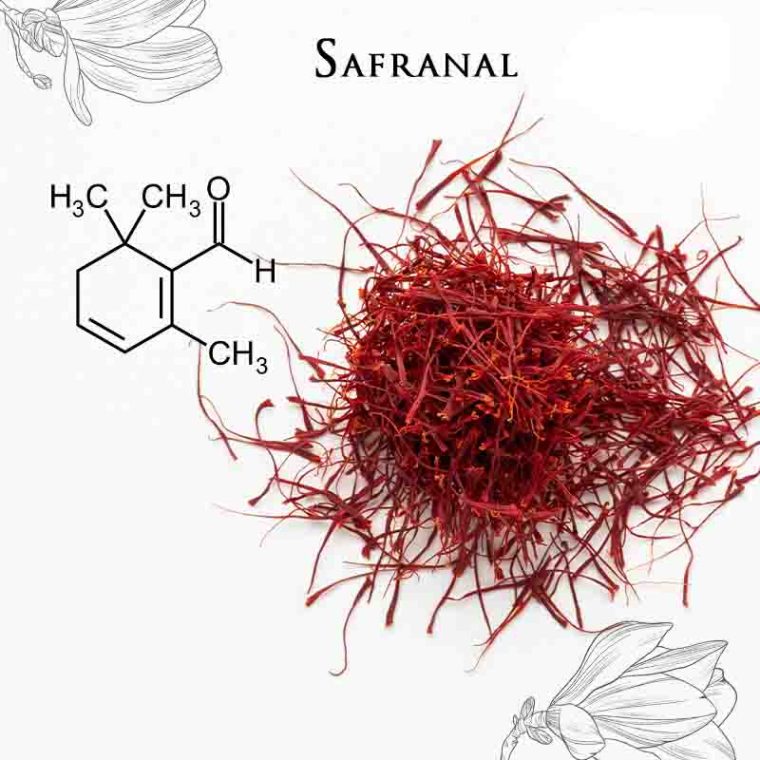Safranal is one of the main and important compounds in saffron (Crocus sativus), primarily responsible for the unique aroma of this plant. It is a monoterpene aldehyde that forms during the drying process of saffron stigmas from the breakdown of the carotenoid crocin. Beyond its role in saffron’s fragrance, safranal possesses various medicinal properties, making it a subject of interest in scientific research.
Properties of Safranal:
1. Powerful Antioxidant: Safranal acts as a potent antioxidant, capable of protecting cells from oxidative damage.
2. Anti-inflammatory: This compound has anti-inflammatory properties that can help reduce inflammation in the body.
3. Antidepressant: Some studies have shown that safranal may aid in alleviating symptoms of depression and anxiety.
4. Neuroprotective: Safranal can protect neurons from damage caused by various factors and enhance the functioning of the nervous system.
Therapeutic Applications:
1. Treatment of Depression: Research indicates that safranal can be used as a natural supplement to reduce symptoms of depression and anxiety.
2. Brain Protection: Safranal may play a role in protecting the brain against neurodegenerative diseases like Alzheimer’s.
3. Anticonvulsant: This compound has been studied as an anticonvulsant agent and may be effective in controlling epilepsy.
4. Improving Nerve Function: Safranal can assist in nerve regeneration after injury and improve motor function.
Conclusion:
Safranal is an active compound in saffron with highly valuable medicinal properties. Not only does it contribute to saffron’s unique aroma, but it also plays a role in improving mental health, protecting the nervous system, and reducing inflammation. Continued research on safranal could lead to the development of new and natural drugs for treating various diseases.



